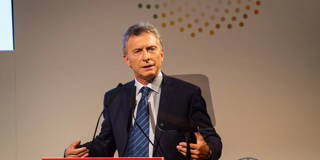
The Trouble with Argentina’s Economy
With sustained economic growth, Argentina would be able to avoid another debt crisis. Although there are no silver bullets to put the economy on a more stable path, changing current macroeconomic policies would at least give the country a chance.
NEW YORK – In 2018, Argentina experienced a currency crisis and stagflation. Annual inflation reached 47.6%, GDP fell by 2.5%, and unemployment and poverty increased.